Michael looks at assessing news premiums and news discounts with two recent examples.

One question I’m often asked by clients is how do you gauge the news and what price to go within the uncrossing trade?
Whilst much of trading can be systematic, such as following entries, stop losses, position sizing, and risk management, intraday trading is a different beast altogether.
It requires a lot of discretion because there are no hard and set rules.
For example, a stock gapping up might often be as a result of good news. Yet when you buy in the uncrossing trade, the stock sells off. Why? It could be because the news premium was too high. Or it could be because a new manager has taken control of the fund and is liquifying his predecessor’s holdings. Or because a private investor wants a new extension.
The news premium (or news discount) is the price gap between the closing price and the new opening/uncrossing price.
Intraday traders have to make a judgement call on whether the stock has more to move, is priced right, or could move against the gap.
As a rule of thumb, the smaller the news premium on good news, the more likely the chance the stock will go up.
This is because if the market hasn’t yet priced in the news accordingly, then that means it may catch up during trading hours.
But if the market gaps up heavily then maybe it’s priced in and there’s not much of a move – if any – left in the stock.
Likewise, the converse is true. If a stock has terrible news yet doesn’t react, then that means the news discount is small. And so there may be an extended move throughout the day if you can short the stock early.
The reason why low news premiums and new discounts are good is because it allows the trader to get a good risk/reward trade opportunity.
For example, if a company releases good news and the news premium is small, then you can go long knowing that you’re close to the stock price pre-news and that your risk on the trade is small. And likewise, if a company releases terrible news and the price is almost unchanged, that can be the opportunity.
Here are two examples.
Ashtead Technology Holdings (AT.)
Don’t get this stock confused with the bigger Ashtead.
Ashtead Technology Holdings PLC is a subsea equipment rental and solutions organization supporting the installation, inspection, maintenance, repair, and decommissioning of infrastructure across the offshore energy industry. Its service offering is applicable across the lifecycle of offshore wind farms and offshore oil and gas infrastructure.
Here’s the company’s latest update which details an acquisition and also an update on current trading.
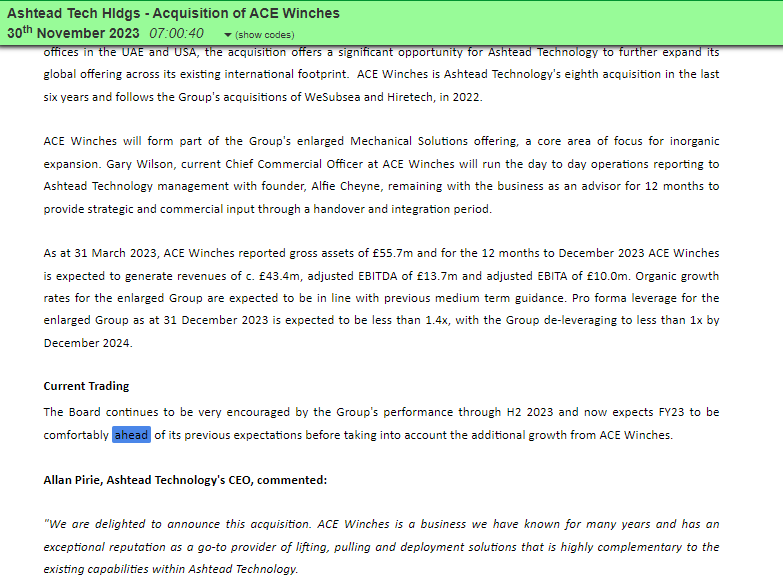
It talks about how FY23 is going to be “comfortably ahead of its previous expectations before taking into account the additional growth from ACE Winches”.
So, already good news.
However, the company also say that ACE Winches will be “expected to be materially earnings enhancing in FY2024 and beyond”.
To me, that sounds like FY24 forecasts are at serious risk of being upgraded if not upgraded already.
It’s a brilliant RNS. And one you’d imagine would open up significantly.
But that wasn’t the case.
As you can see on my highly technical drawing here, the news premium was only around six percent.
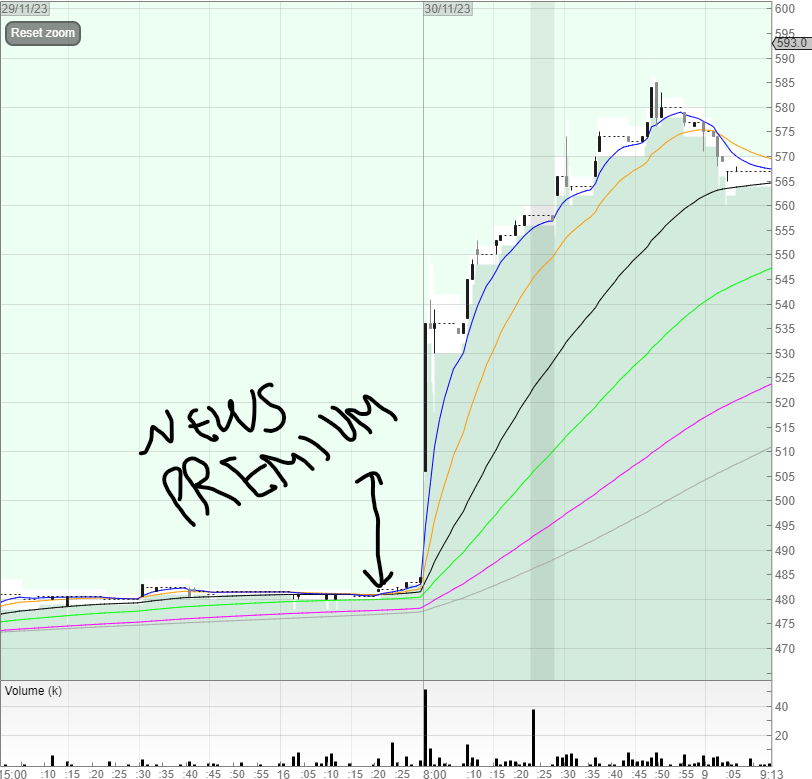
As a result, the stock rallied significantly on the open as the market was slow to react and price the stock efficiently.
Had the stock opened up 20 percent, then there would have been less upside on the trade and a bigger risk because of the bigger gap.
The update did not scream like an ahead statement was on the way, as many companies do.

When you see a stock rally heavily into an update, and the news is good, then is the news really a surprise? Hence the old stock market adage, ‘buy the rumour, sell the news’.
Here’s another one.
Dr. Martens (DOCS)
Now, if these shoes were as popular in the rest of the world as they are in London then it probably wouldn’t have put out this news.
Unfortunately (for Dr. Martens), they’re not.
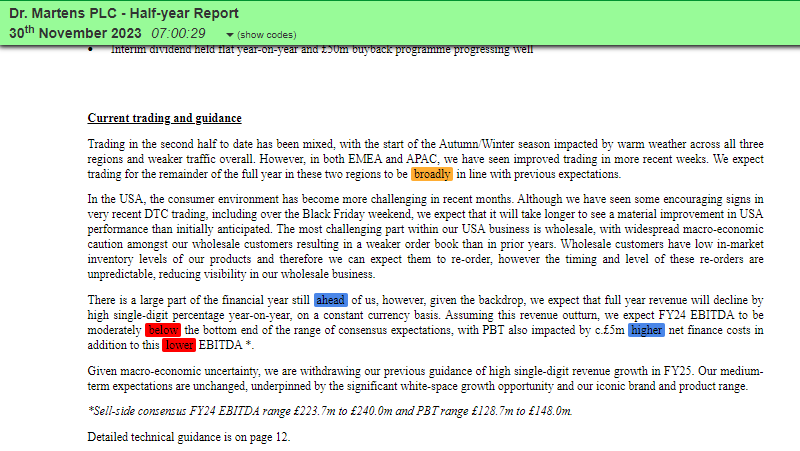
The news points out that the USA has been challenging in recent months, and that revenue will decline by a high single-digit percentage year-on-year, EBITDA to be “moderately below” the consensus, and that PBT will also see a c.£5m impact.
Oh, and FY25 guidance was been withdrawn. So overall, a terrible RNS.
This time, the news discount was bigger at around 20 percent. The risk/reward was not as great.
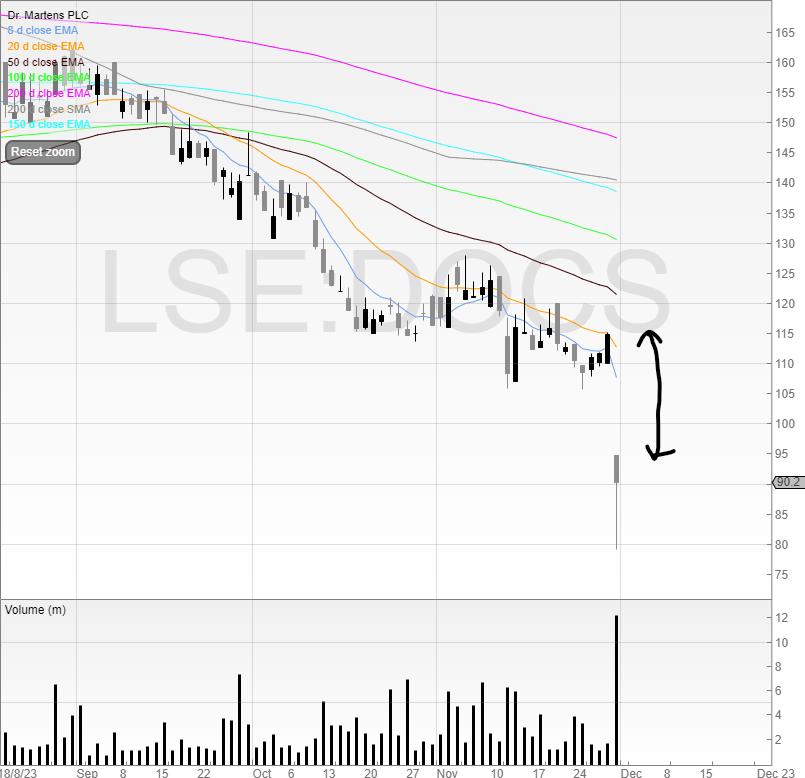
But it was a multi-year profit warning, and in my experience, those are never taken well.
So it was with this stock, and the stock opened at 95p, and traded below 80p, before rallying to close at 90.2p.
Had the stock opened 50 percent down then you (quite rightly) might be thinking if it was overdone. And so this is why intraday trading is discretionary, as you’re looking at the chart prior to the news to see if the move was factored in. You then assess how much of a surprise the news is.
For example, if it’s the third profit warning in a row then is it really a surprise? And finally, you take into consideration the liquidity and news premium/discount.
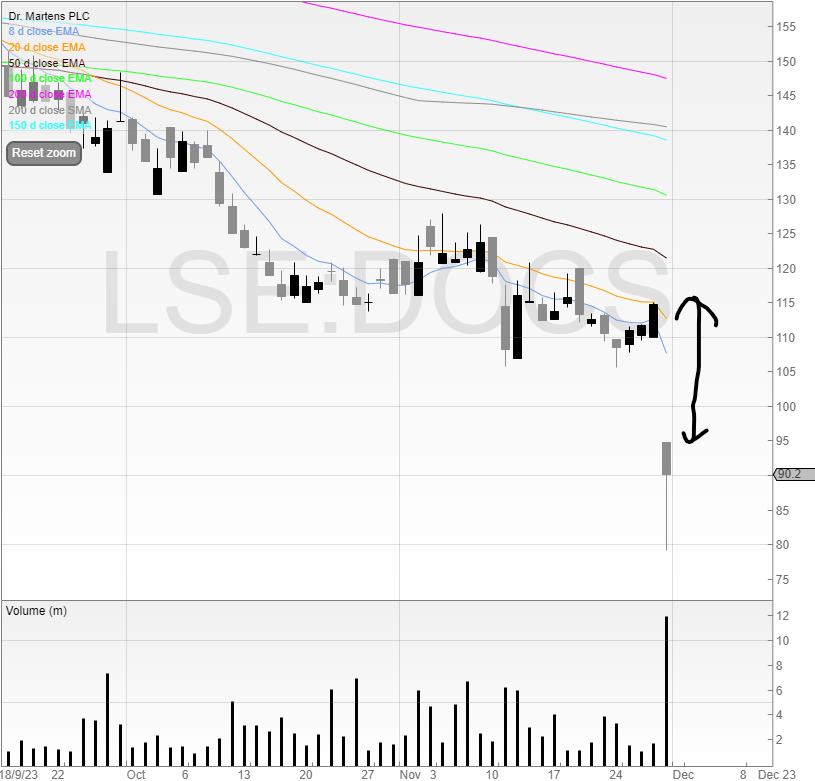
To conclude, look at how stocks have reacted in the past to news. For example, YU. had a habit of selling off on every ahead statement until the seller cleared.
Those who blindly bought into the stock because it gapped up and was ahead found that they were exit liquidity for the seller who was all too happy to unload onto them.
Alongside this, check the recent chart, and assess how big the news is to the company and judge it on the uncrossing. Again, there are no hard and fast rules here. If it was that easy, then everyone would be doing it.
Michael Taylor
Get detailed analytics on all of your trades with Michael’s trading journal available free here: www.tradesmash.com
Twitter: @shiftingshares
Got some thoughts on this week’s article from Michael? Share these in the SharePad chat. Login to SharePad – click on the chat icon in the top right – select or search for a specific share or the “Traders chat”

This article is for educational purposes only. It is not a recommendation to buy or sell shares or other investments. Do your own research before buying or selling any investment or seek professional financial advice.



